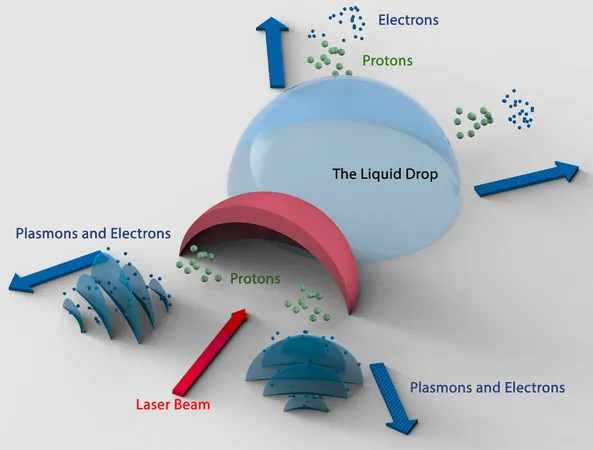
Revolutionary Table-Top Proton Accelerators: High-Energy Science Gets Compact!
2025-05-19
Author: Benjamin
From Gigantic Labs to Your Desktop: The Future of Proton Acceleration
Imagine if the cutting-edge technology used in colossal particle accelerators could fit on a table! Thanks to groundbreaking advancements in laser ion acceleration, this vision is becoming a reality. Scientists are now harnessing intense laser flashes to heat solid materials to mind-boggling temperatures, propelling charged particles at phenomenal speeds. This innovation is not just about convenience – it holds tremendous potential for cancer treatment, semiconductor processing, and advanced imaging.
The Challenge of Traditional Laser Systems
Conventionally, massive laser systems, requiring several joules of energy to work their magic, have dominated this field. These gigantic apparatuses produce flurries of ions that are sped up to extreme velocities, mimicking million-volt particle accelerators but compressed to the size of a human hair! However, these giants come with a downside: they operate only a few flashes per second due to overheating risks, severely restricting their practical applications in real-world scenarios.
Small Lasers, Big Breakthroughs!
Enter the realm of small-scale lasers commonly found in university labs, capable of delivering thousands of flashes at just a fraction of a joule. Previously, experts believed that the ion acceleration from these low-energy setups would be minuscule – nowhere near the million-electron-volt (MeV) energy levels of their larger counterparts. This inherent trade-off posed a significant barrier to the development of swift, efficient ion sources.
A Game-Changer in Proton Acceleration
Recent research published in *Physical Review Research* by S.V. Rahul and Ratul Sabui from TIFR Hyderabad, guided by the brilliant Prof. M. Krishnamurthy, has shattered these limitations. They’ve utilized millijoule lasers to produce megavolt energy protons at an astonishing rate of one thousand accelerations per second!
Turning a Challenge into an Opportunity
The secret behind this remarkable breakthrough lies in an often-dreaded phenomenon: pre-pulses. These are minor bursts of energy that unintentionally occur before the main laser pulse, usually causing chaotic disruptions. Instead of trying to suppress them, the researchers ingeniously repurposed these pre-pulses to their advantage.
Creating Plasma Waves for Efficient Acceleration
In their innovative experiments, the pre-pulse crafted a hollow cavity within a liquid microdroplet, setting the stage for a low-density plasma. When the main laser pulse hit, it set off expansive waves within this plasma, which quickly collapsed, hurling powerful bursts of energetic electrons – the key players in accelerating protons to hundreds of kilovolts.
A Bright Future for Laser-Driven Ion Accelerators
With this new methodology, researchers can achieve rapid ion acceleration without requiring the extreme intensities or cumbersome systems needed to suppress pre-pulses. This breakthrough could lead to high-repetition-rate laser-driven ion accelerators that fit on tabletop units in university labs, opening the doors to exciting real-world applications in science and healthcare.









 Brasil (PT)
Brasil (PT)
 Canada (EN)
Canada (EN)
 Chile (ES)
Chile (ES)
 Česko (CS)
Česko (CS)
 대한민국 (KO)
대한민국 (KO)
 España (ES)
España (ES)
 France (FR)
France (FR)
 Hong Kong (EN)
Hong Kong (EN)
 Italia (IT)
Italia (IT)
 日本 (JA)
日本 (JA)
 Magyarország (HU)
Magyarország (HU)
 Norge (NO)
Norge (NO)
 Polska (PL)
Polska (PL)
 Schweiz (DE)
Schweiz (DE)
 Singapore (EN)
Singapore (EN)
 Sverige (SV)
Sverige (SV)
 Suomi (FI)
Suomi (FI)
 Türkiye (TR)
Türkiye (TR)
 الإمارات العربية المتحدة (AR)
الإمارات العربية المتحدة (AR)